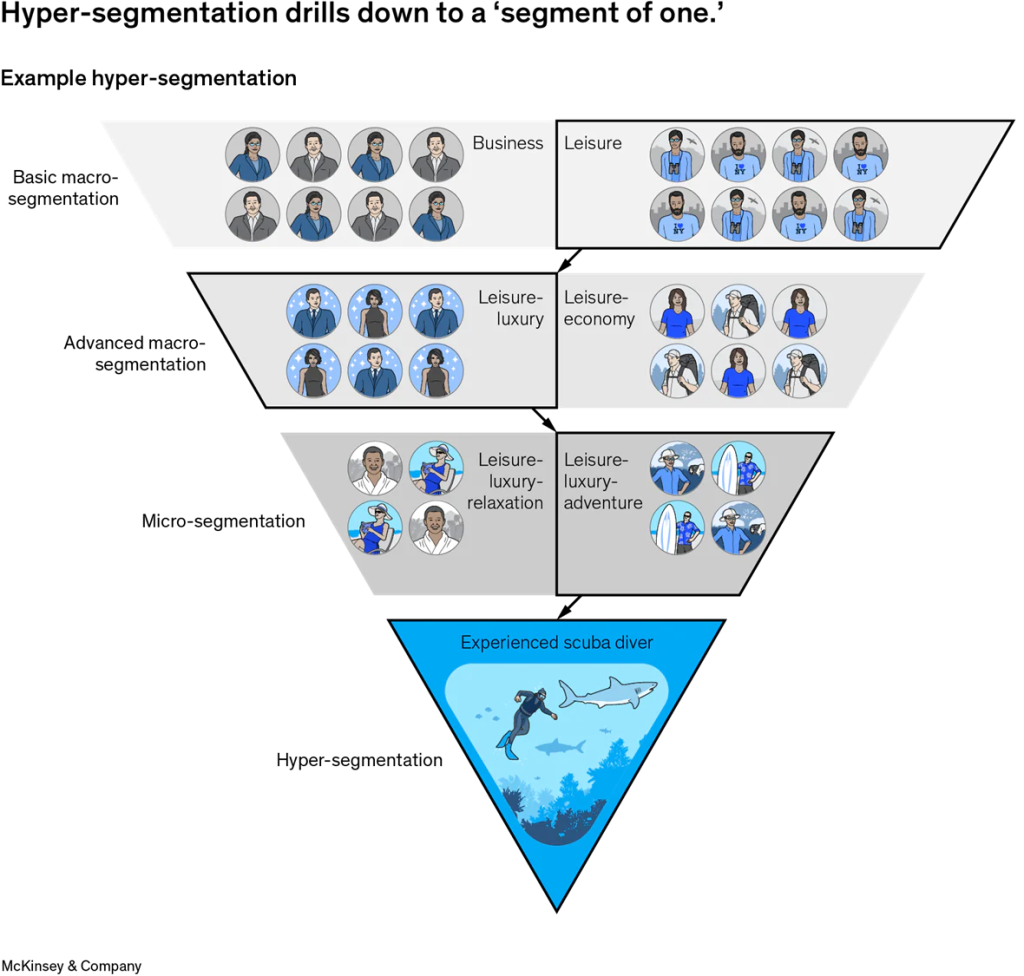
Every generation has its own “golden age” of travel, often defined by the widespread adoption of new technology – from the jet engine of the 1950s that drastically reduced travel times to the dot-com period of the 1990s that allowed customers to build their dream itineraries online. Today, a new era of digitally enabled travel is upon us.
NB: This is an article from McKinsey & Co.
Subscribe to our weekly newsletter and stay up to date
Advances in artificial intelligence (AI), including generative AI (gen AI), and machine learning (ML) are equipping the industry to reimagine what it means to plan, book, and experience travel. This surge of innovation sets the stage for travel companies to rethink how they interact with customers, develop products and services, and manage operations.
Know your customers like you know your friends
Over the past two decades, the variety and volume of customer data that travel companies can capture has increased dramatically; new tools and technologies such as AI-powered assistants are only accelerating this trend. However, this data is often difficult to process and does not always paint a full picture of the customer. Companies may turn to third-party sources to complete their understanding – combining and distilling commercial, operational, financial, and behavioural inputs. Robust marketing technologies can then help distinguish the “signal” from the “noise” in the data to better predict customer behaviour.
Having gained a clear and comprehensive understanding, companies can create customer segments to guide how they interact with and serve different customers. Depending on the data available and the analytics capabilities at hand, segmentation can range from grouping customers into segments based on a single macro characteristic (e.g., business versus leisure) to individual “segments of one,” known as hyper-segmentation.
Drilling down to segments of one can enable hyper-personalization, which is broadly defined as the ability to uniquely tailor touchpoints to an individual customer’s needs, preferences, and behaviors. At its core, hyper-personalization is not only about increasing conversion rates, but about providing the customer with an end-to-end experience adapted to their specific context. Considering the level of personalization that is becoming the norm in many aspects of daily life, companies are adopting an ongoing test-and-learn approach to ensure their offers and actions resonate with customers’ rising expectations.
Hyper-personalization can also help companies rebuild trust if operations have gone wrong. Personalized communication reassures customers that they are at the forefront of the company’s mind and instils confidence that a thoughtful recovery plan is in place. For example, companies may share real-time status updates in moments of disruption and provide tailored solutions, or even proactive compensation, to ensure customers feel individually taken care of.







